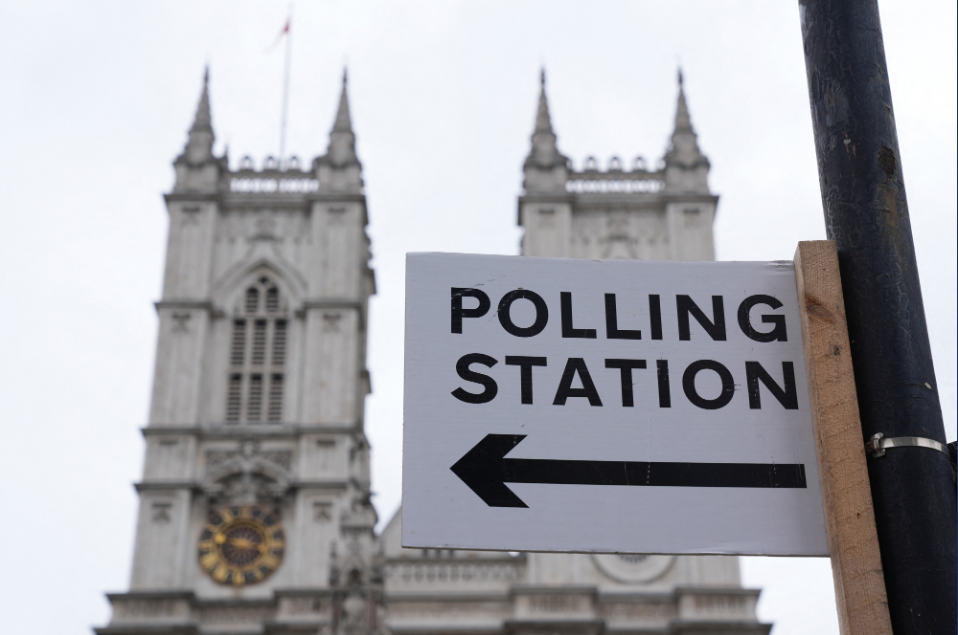British voters go to the polls on Thursday in a general election to choose new members of parliament.
Voting is taking place for all 650 MPs in the lower chamber of parliament, each representing a constituency or seat.
A total of 543 seats are in England and 57 in Scotland, with 32 in Wales and 18 in Northern Ireland.
There are 4,515 candidates this year — a record.
The increase is down to hard-right Reform UK’s decision to end its 2019 promise not to stand against the Conservatives, and more Green party hopefuls.
In all, Prime Minister Rishi Sunak’s Tories are fielding candidates in 635 seats, with 631 for Keir Starmer’s Labour and 630 for the Liberal Democrats, led by Ed Davey.
Reform UK, led by Nigel Farage, has 609 with 629 for Carla Denyer and Adrian Ramsay’s Greens. The remainder are running for smaller parties or as independents.
Polls open at 7:00 am (0600 GMT) and close at 10:00 pm. Electors vote once for a candidate in their constituency, marking a cross on a ballot paper.
Voters have to be registered, over 18, and either a British, Irish or qualifying Commonwealth citizen, resident in the UK or registered as an overseas voter.
Prisoners and members of the unelected upper chamber of parliament, the House of Lords, cannot vote.
Ballots are counted immediately after polling ends, with the results declared from late evening into July 5.
An exit poll, commissioned by UK broadcasters BBC, Sky News and ITV News, is published at 2100 GMT when polls close, based on interviews by IPSOS at 133 polling stations across the UK.
The survey of voter behaviour is seen as an accurate indicator of the result.
The UK general election uses the first-past-the-post system, which means the candidate and party with the most votes wins.
For an overall majority, a party has to secure at least 326 seats.
But in reality the figure is lower, as the Speaker — an MP who is by convention elected unopposed in his or her constituency — and their three deputies — also MPs — do not vote in parliament.
MPs from the pro-Irish nationalist Sinn Fein party do not take up their seats in the UK parliament because they do not recognise British sovereignty over Northern Ireland.
As head of state, the monarch — currently King Charles III — nominates the leader of the biggest party in parliament as prime minister.
The next biggest party becomes His Majesty’s Official Opposition, with a Shadow Cabinet of MPs as counterparts to government ministers.
The leader of the opposition goes head-to-head with the prime minister in parliament every week when parliament is sitting.
There is a hung parliament if no party has an overall majority. The biggest party may decide to form a minority government, requiring the support of other parties to pass legislation.
Alternatively, it can negotiate with one or more smaller parties to govern as a formal coalition, as happened in 2010 when the Conservatives ruled with the Liberal Democrats.
MPs scrutinise and vote on proposals from the government, and can sit on parliamentary committees to study the work of the executive as a whole or specific issues.
Not all policy and proposed legislation is a matter for the UK parliament in Westminster. Areas such as health, transport, environment and housing are devolved to lawmakers in Scotland, Wales and Northern Ireland.
At the last general election, held on December 12, 2019, Boris Johnson’s Conservatives were runaway winners with 365 seats, with Labour on 202.
The Scottish National Party won 48, followed by the Liberal Democrats on 11.
Northern Ireland’s pro-UK Democratic Unionist Party secured eight seats, with Sinn Fein on seven, and Welsh nationalists Plaid Cymru on four.



No comment